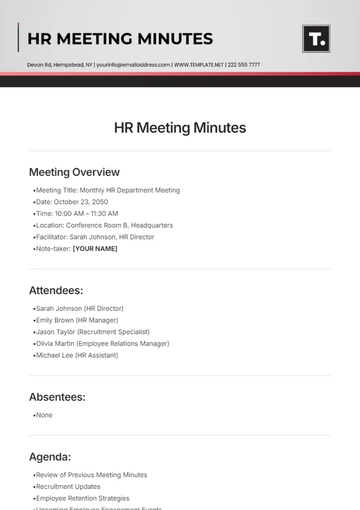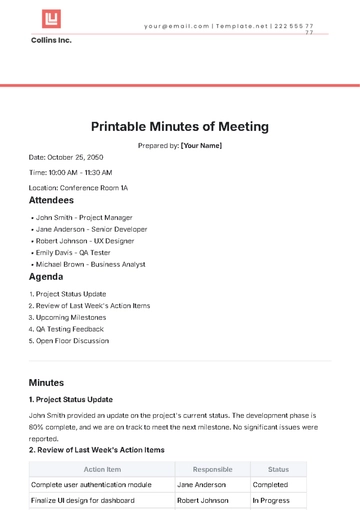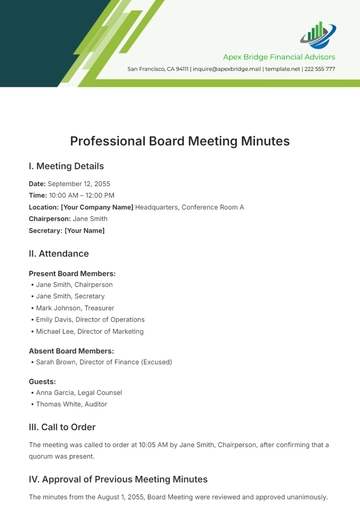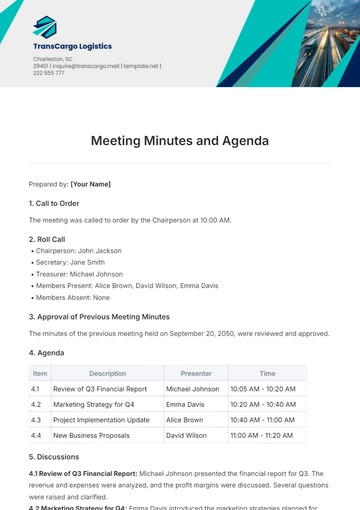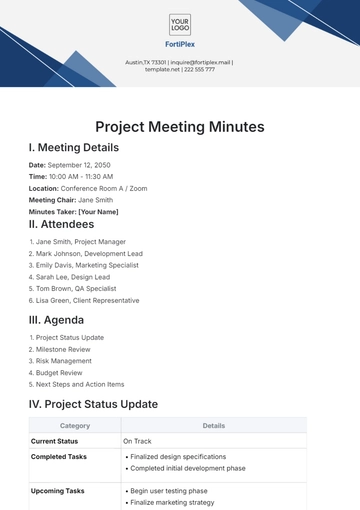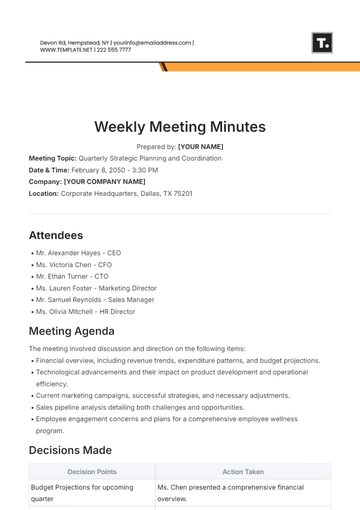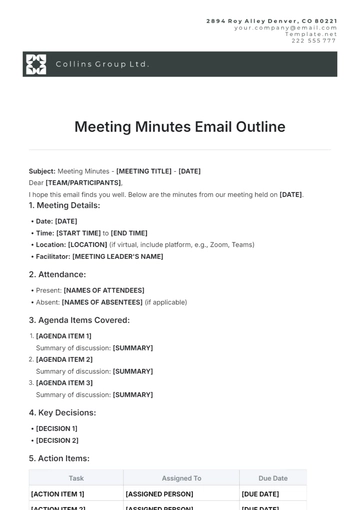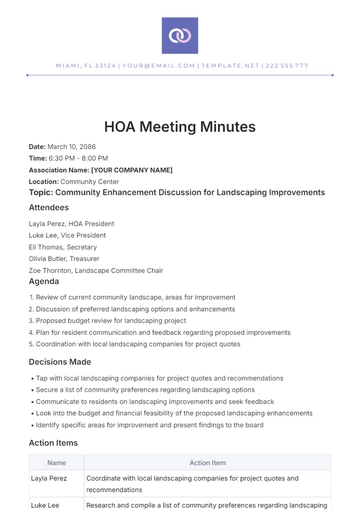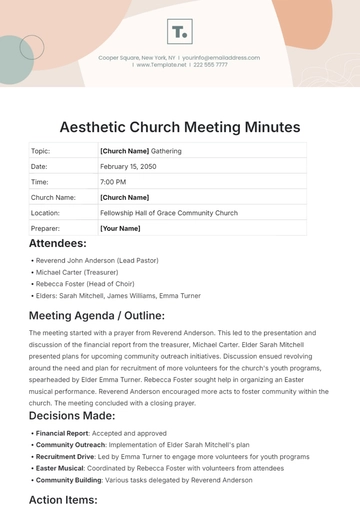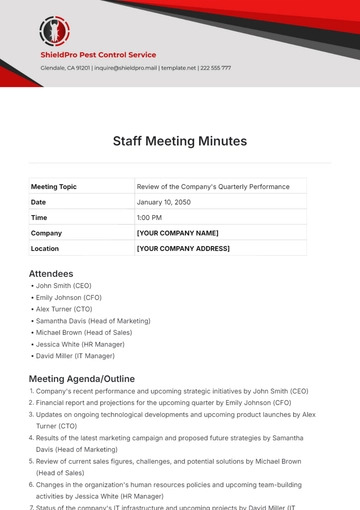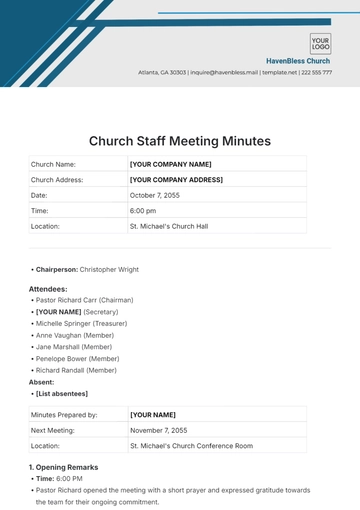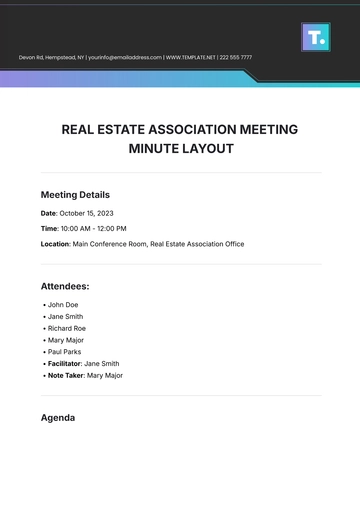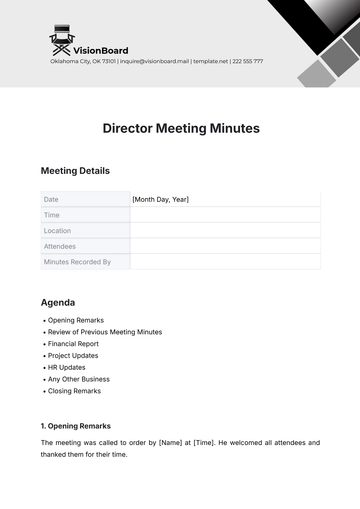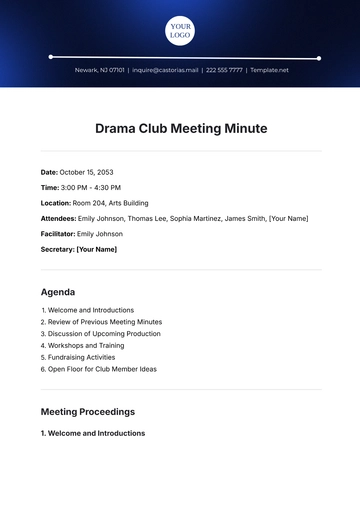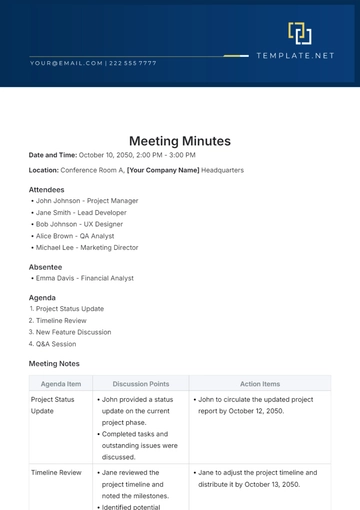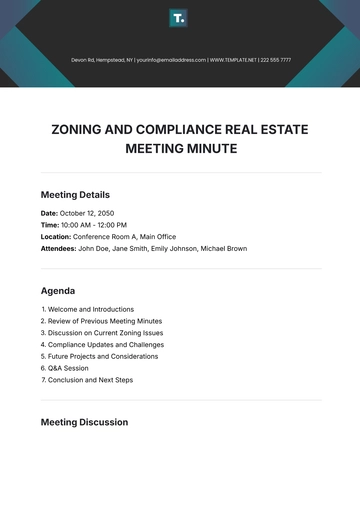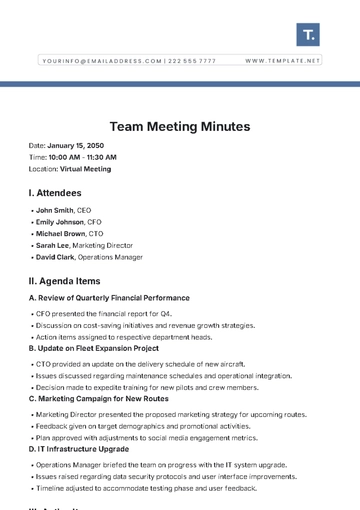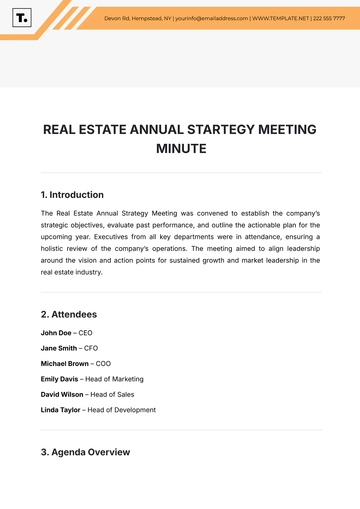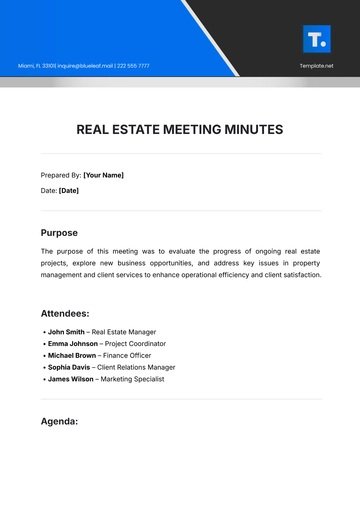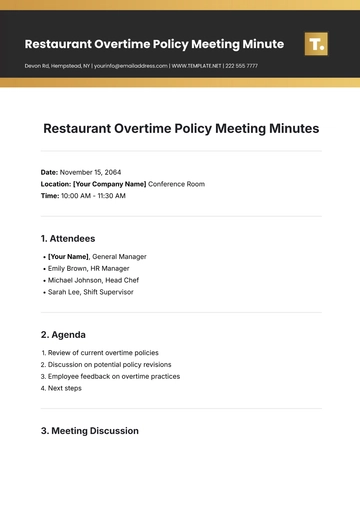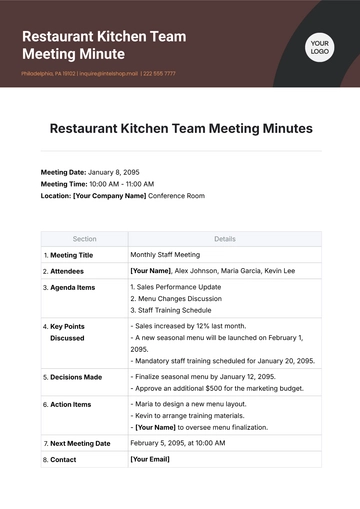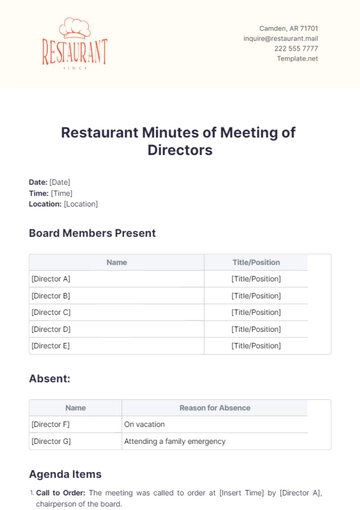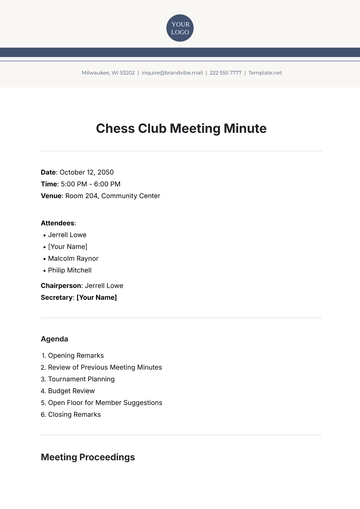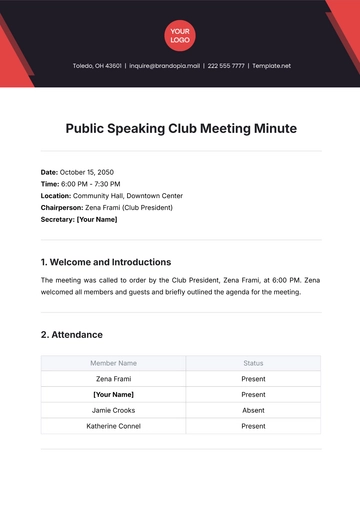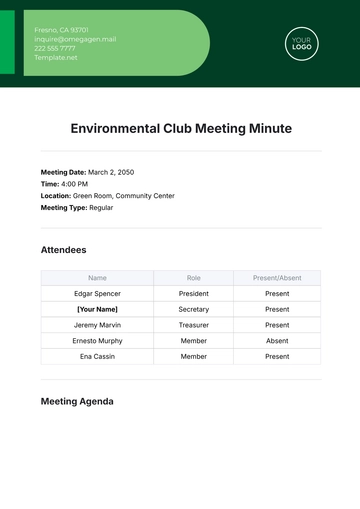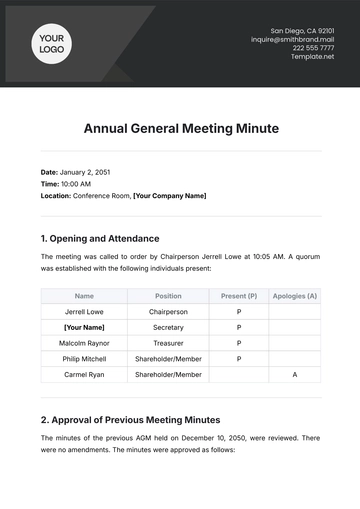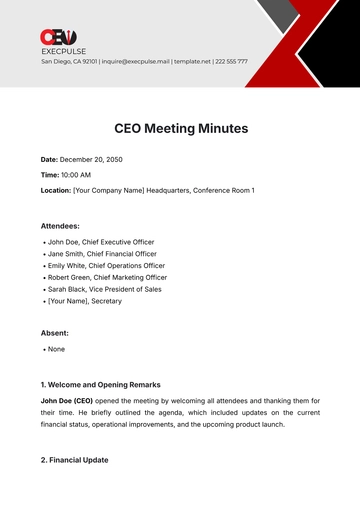Free Restaurant Management Meeting Minutes
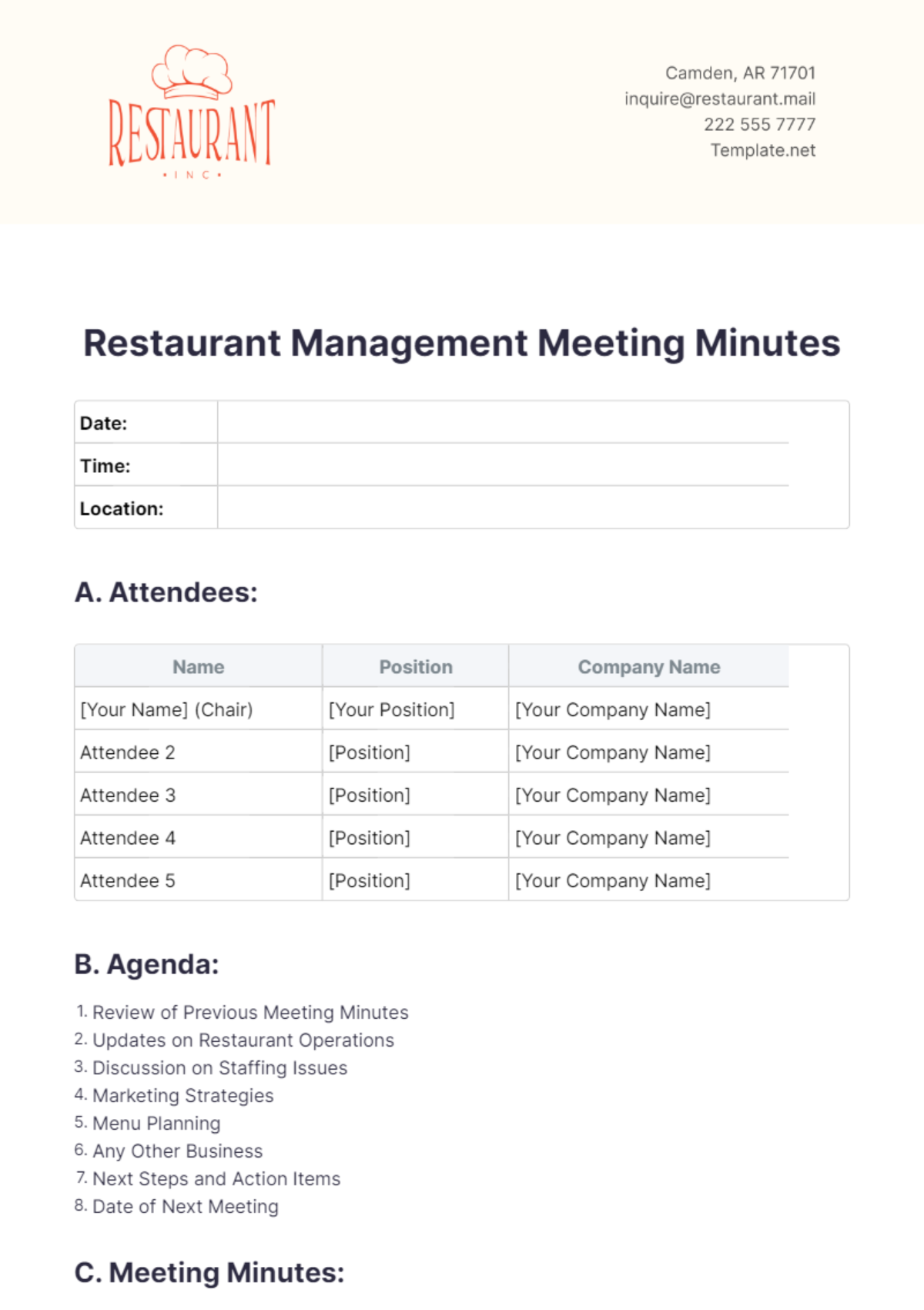
Date: | |
Time: | |
Location: |
A. Attendees:
Name | Position | Company Name |
|---|---|---|
[Your Name] (Chair) | [Your Position] | [Your Company Name] |
Attendee 2 | [Position] | [Your Company Name] |
Attendee 3 | [Position] | [Your Company Name] |
Attendee 4 | [Position] | [Your Company Name] |
Attendee 5 | [Position] | [Your Company Name] |
B. Agenda:
Review of Previous Meeting Minutes
Updates on Restaurant Operations
Discussion on Staffing Issues
Marketing Strategies
Menu Planning
Any Other Business
Next Steps and Action Items
Date of Next Meeting
C. Meeting Minutes:
Review of Previous Meeting Minutes:
The Chair opened the meeting by welcoming all attendees and called for a review of the previous meeting minutes.
Attendees confirmed that they had reviewed the minutes and agreed that they accurately reflected the discussions and decisions made during the last meeting.
Updates on Restaurant Operations:
[Attendee 2] provided an update on current restaurant operations, highlighting any recent challenges or successes.
Key points included:
Sales performance, including revenue figures and comparisons to previous periods.
Customer feedback, with emphasis on notable trends or recurring issues.
Operational issues, such as equipment maintenance or supply chain disruptions.
Discussion on Staffing Issues:
[Attendee 3] led the discussion on staffing matters, addressing any concerns regarding recruitment, training, or retention.
Topics discussed:
Current staffing levels, including any vacancies or turnover rates.
Recruitment strategies, such as job postings, referrals, or partnerships with culinary schools.
Training initiatives, including onboarding procedures or ongoing professional development opportunities.
Staff morale and retention efforts, such as employee recognition programs or performance incentives.
Marketing Strategies:
[Attendee 4] presented the latest marketing strategies and campaigns aimed at attracting new customers and retaining existing ones.
Points covered:
Digital marketing efforts, including social media engagement, email campaigns, and online advertising.
Promotions and special offers, with details on upcoming events or seasonal promotions.
Collaborations with local influencers, organizations, or media outlets to enhance brand visibility.
Menu Planning:
[Attendee 5] provided updates on menu planning, including any new dishes, seasonal offerings, or adjustments based on customer feedback.
Discussions revolved around:
Menu diversity and balance, ensuring a variety of options to cater to different dietary preferences and restrictions.
Pricing strategies, including analysis of ingredient costs, competitive pricing, and profitability margins.
Ingredient sourcing and quality, with a focus on sourcing locally or sustainably where possible to align with [Your Company Name]'s values.
Any Other Business:
Attendees were invited to raise any additional topics or concerns not covered in the agenda.
Next Steps and Action Items:
The Chair summarized the key points discussed during the meeting and assigned action items to relevant attendees.
Follow-up Actions:
Schedule a follow-up meeting with the management team to review progress on action items and address any outstanding issues.
Conduct further research on potential partnerships with local suppliers or farmers to enhance the restaurant's sustainability initiatives.
Explore opportunities for staff team-building activities to boost morale and foster a positive work culture.
Date of Next Meeting:
It was agreed that the next Restaurant Management Meeting would be scheduled for [Date] at [Time]. The location or virtual platform will be communicated closer to the date.
Adjournment:
The meeting was adjourned at [Time] by the Chair.
Prepared by:
[Your Name]
[Your Position]
[Your Company Name]
- 100% Customizable, free editor
- Access 1 Million+ Templates, photo’s & graphics
- Download or share as a template
- Click and replace photos, graphics, text, backgrounds
- Resize, crop, AI write & more
- Access advanced editor
Document meeting discussions effectively with Template.net's Restaurant Management Meeting Minutes Template. This customizable document offers a structured format for recording key points, action items, and decisions made during management meetings in your restaurant. Enhance accountability and follow-up. Editable in our Ai Editor Tool for seamless customization to match your meeting agenda and requirements.
